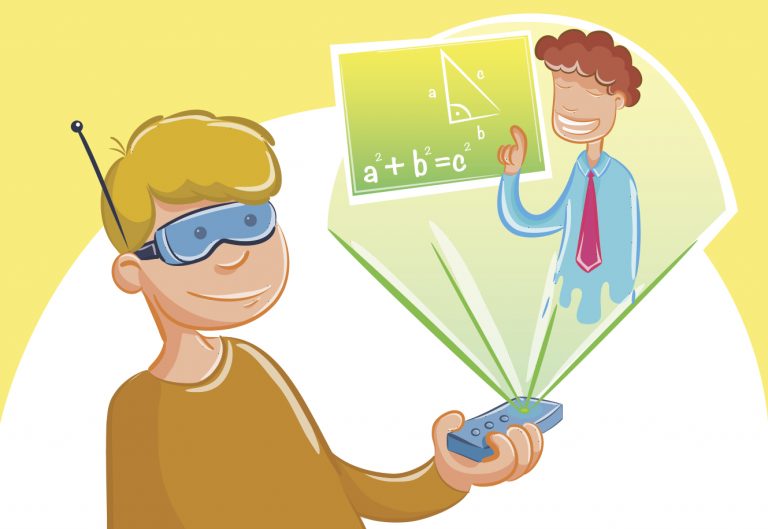Parenting(Age 5 to 8) | Academic | General | Parenting(Age 9 to 12) | Parenting(Age 13 to 16) | Sep 24, 2020
The Future of Schooling

What is next for the schools and students once the pandemic is over?
This is the most tormenting question whose answer we are trying to find. In an attempt to contain the spread of the COVID-19 pandemic, the school kids are at home indulging in online learning with the help of their parents.
Mankind is bravely responding to the situation to keep life going. Within a short period, we got adapted to work from home scenario. The teachers found ways to become creative in doing their jobs in an entirely new way. Optimistically, we will get through the pandemic soon, but the question is how will the things look when schools start again, which in some places has already begun with partial arrangements?
What we are facing, happened overnight. Within a short notice the entire education system had moved online with little preparation. Teachers and students began trying hard to access tough and critical technology, while on the other hand, parents are suddenly being pushed into the unforgiving role of educators with an indefinite expectation of all of this rather being temporary.
When we look back to the past years of our education system, we find that nothing much has changed over the years. Indeed, we cannot deny the fact that technology had invaded the classroom and interactive whiteboards had replaced chalkboards, but the basic premises remained unchanged typically right from the beginning as we knew it.
Feasible changes in school:
Schools are working towards a rapid change to overcome the dangers of physical proximity by using information and communication technologies (ICT) such as downloaded videos, Zoom meetings, asynchronous conversations on learning management systems, chat rooms, and a myriad of other technologies available at their disposal. More work is being done towards transforming schools to the newly coined – online schools!
Might see some changes in traditional teaching model
In recent years, we have witnessed significant changes in teaching methods. For ages, the traditional method of imparting education was used, which included recitation and memorization techniques, whereas in recent times, education is imparted through interactive methods. In conventional education, students are expected to study and memorize the assignments, and at the end of the module, a written test or oral examination would be conducted to evaluate them. The traditional methods ensured that the students who were rewarded for their efforts, used class periods efficiently and exercised clear rules to manage students’ behaviors. The periods that were designed on established customs that had been used successfully in schools for many years. The teachers communicated the knowledge and enforced pre-determined standards of behavior. Now, the changes that we are going observing and which will take place in the near future will include focus on the individual student’s needs rather than assuming that all students are at the same level of understanding. This approach is more activity-based when it comes to questioning, explaining, demonstration and collaboration techniques. This enables the students to develop their critical thinking, problem solving and decision-making skills in a more independent manner. Modern means of learning encourage students to be collaborative and more productive. Educators are also introducing younger students to online testing, smart boards and personal tablet computers and making these systems a part of students’ scholastic routine.
It has been researched that software-based special lesson plans help students improve in their weak areas. Thus, providing a specialized lesson plan will enable the students to meet their needs.
With an attempt to responding to the Coronavirus Pandemic, we have started to use technology-based learning and this has led to a drastic transformation in how we teach and learn – the methodologies so to say! However, we began to notice these changes long before the pandemic had struck, and they will even go on long after the threat subsides. Policy-makers have been exploring new transformative approaches to education over the years, so that we can go far beyond just online lessons at home.
Read more at: https://www.vnaya.com/blog/impact-of-coronavirus-on-education-sector/
Rethinking on Altering the Education Model
As schools have started, slowly, to reopen in many areas, now is the time to reflect on the future of schooling. Our children will soon grow up to be the workers and leaders in a digital-first world, who, hence, need to master new skills and new ways of thinking. To be successful in life and at work, they all need social, emotional, and academic support which can get richer through flexible learning experiences, a way of learning that will differ vastly from the schooldays of their parents and even more so as they knew it for themselves. Although technology has changed many aspects of our society over many years, our school structures did not go through a significant change. However, in the current situation, we have the potential and the pressing need than ever before to transform and improve the existing system so that the students can achieve more and develop valuable skills with better outcomes.
















Post a Comment: